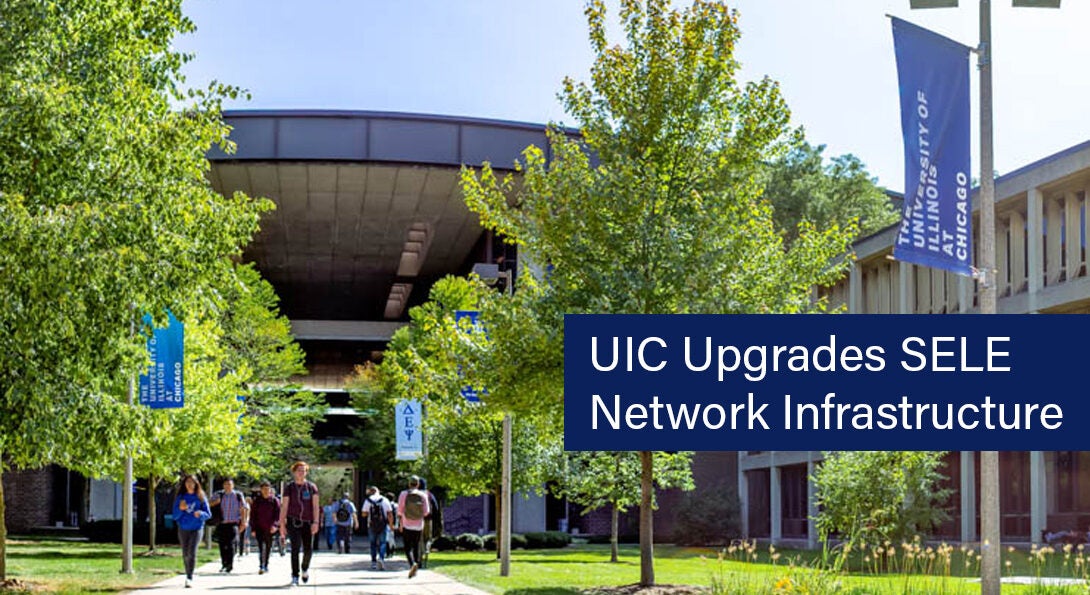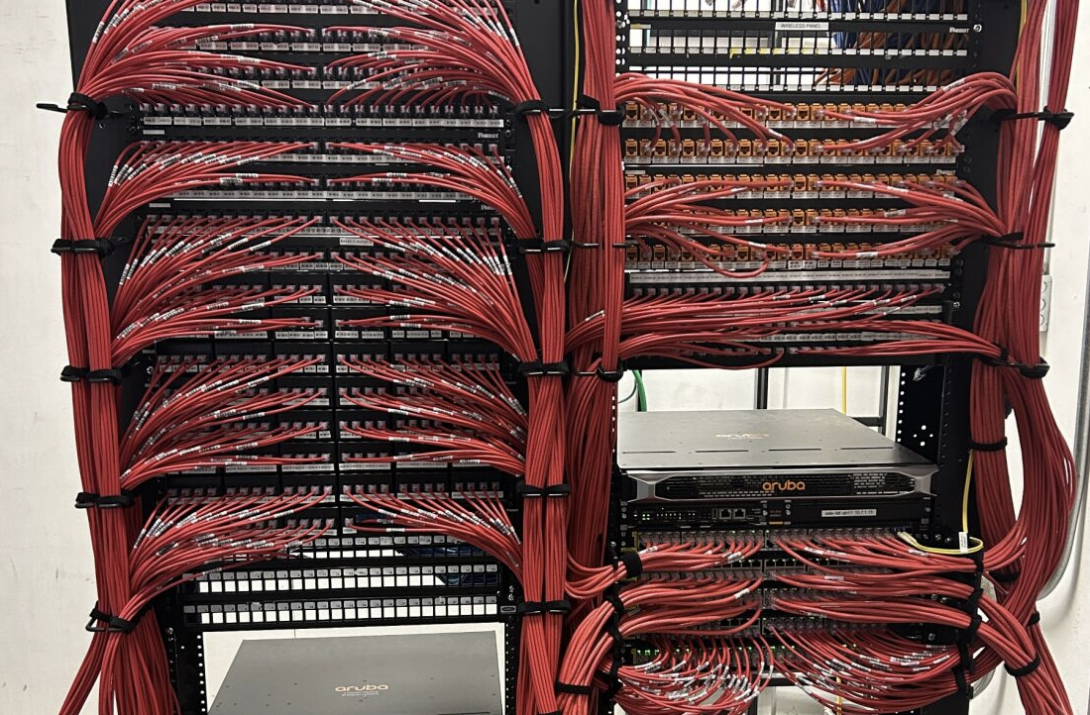Infrastructure Upgrade Boosts Network Connectivity at SELE

Introduction
As academic institutions increasingly rely on digital tools and resources for teaching, learning, research, and administration, a robust and up-to-date network infrastructure becomes critical.
Modern networks enhance connectivity and accessibility, ensuring that students, faculty, and staff can efficiently collaborate and access information from anywhere on campus. They support the growing demand for high-speed internet, accommodate the proliferation of smart devices, and bolster cybersecurity measures to protect sensitive data.
By investing in network modernization, universities can foster an environment of innovation, streamline operations, and maintain their competitive edge in the digital age.
As part of the Forward Initiative, UIC Technology Solutions Network Infrastructure Teams worked to replace network infrastructure crucial to network performance in the Science and Engineering Labs East Building (SELE). The work performed increased network speeds for everyone in the building from 100 MB per second, to Gigabit speeds. Speeds for wireless access points were also increased.
Quote
The ‘access layer’ network infrastructure connecting clients to the network in SELE had reached its end-of-life. Our switch vendor no longer provided support and no longer stocked replacement parts. We purchased new equipment from our new switch vendor and cleaned up network closets to handle connectivity for now and the future.
| Technology Solutions Network Engineer
Copy 2
The project’s primary goal was to reduce the amount of time the network is “down” or unavailable to clients. The team performed the upgrades over a span of several days during the first week of January when no classes were being held, to minimize inconvenience, as the entire SELE building was offline while old equipment was being shut down, removed, and replaced.
“Network speeds for wired and wireless have increased greatly. The old switches had reached a point where they were occasionally experiencing failures that affected network connectivity,” Neumann said. The new switches are much more reliable with multiple points of redundancy.”
copy3

Much of the work included replacing old, outdated network equipment with new equipment. This includes replacing old “telephone” grade wiring installed when the UIC was built in the 60’s, with new copper or fiber optic cables that can handle high speed data. The team installed modern enterprise grade WiFi to cover entire buildings instead of select spaces, and ensured that network failures are automatically corrected or bypassed while notifying engineers that a failure has occurred.
SELE has two large network closets that provide network connectivity to the four floors and basement of the building. The team removed up to a dozen smaller switches and replaced them with two large switch chassis in each closet. These chassis weigh over 150 lbs each and require two 220-volt power connections each. The power supplies can provide up to 6,000 watts of power to each chassis, though during normal usage, power consumption is much less. Each chassis can connect up to 500 devices (phones, computers, or wireless access points).